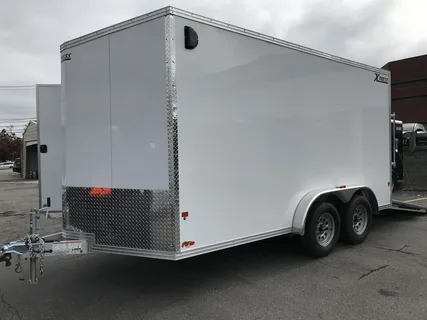 Custom SEO Strategy – Your Path to Page #1 Starts Here!
Custom SEO Strategy – Your Path to Page #1 Starts Here!
Whole House Reverse Osmosis System Cost: What to Expect in 2025
Written by Elsafaith » Updated on: May 13th, 2025 179 views

A Whole House Reverse Osmosis System (Whole House RO) is an advanced water filtration technology designed to purify all the water entering your home. Unlike under-sink systems that treat water at a single point, a whole house system ensures that every faucet, showerhead, and appliance in your house dispenses highly purified water.
At its core, reverse osmosis (RO) works by pushing water through a semi-permeable membrane, removing up to 99.9% of contaminants. This includes dissolved salts, chlorine, lead, arsenic, PFAS, nitrates, pesticides, and even bacteria and viruses.
In 2025, more Costa Mesa homeowners are turning to RO systems to combat local water quality issues. The Santa Ana River Basin and aging municipal infrastructure can introduce contaminants into household water. A residential reverse osmosis system can be a comprehensive solution.
Which Features and Costs Should You Expect in 2025?
Core Features in 2025
Today’s whole house RO systems in 2025 are smarter, more efficient, and better equipped to handle the demands of a modern California household. Here’s what to expect:
Multi-stage Filtration: Typically includes a sediment filter, carbon block filter, and RO membrane.
UV Sterilizers: Added to eliminate bacteria, viruses, and pathogens.
Water Softening Integration: Many systems now include or pair with a softener to handle hard water common in Costa Mesa.
Smart Monitors: Real-time TDS (Total Dissolved Solids) monitoring and leak detection integrated with smart home platforms.
Energy-Efficient Pumps: High-efficiency pumps reduce waste and enhance water pressure.
Large Storage Tanks: 100-300 gallon storage tanks ensure adequate flow for large households.
Expected Costs in 2025
The cost of installing a whole house reverse osmosis system in Costa Mesa varies depending on home size, system capacity, and additional features.
System Component Low-End Cost Mid-Range Cost High-End Cost
- Core RO System (basic) $3,000 $5,000 $8,000
- Pre-Filtration Setup $500 $1,000 $2,000
- UV Sterilizer $300 $800 $1,500
- Water Softener (if separate) $800 $1,500 $3,000
- Installation Labor $1,000 $2,500 $5,000
- Storage Tank (optional) $500 $1,200 $3,000
- Smart Controls & Monitoring $250 $750 $1,200
- Total Estimated Cost $6,350 $12,750 $23,700
Note: Pricing reflects 2025 market trends, labor costs in Southern California, and the increasing demand for sustainable water solutions.
Who Needs a Whole House Reverse Osmosis System in Costa Mesa?
Ideal Candidates
Not every homeowner needs a whole house RO system. But certain households in Costa Mesa benefit more than others:
- Homes with well water: Especially in fringe or rural parts of Costa Mesa.
- Homes with health-sensitive residents: Infants, elderly, or those with immune disorders.
- Homeowners dissatisfied with municipal water taste, smell, or quality.
- Homes near industrial zones or agricultural runoff areas.
- Families with high-end appliances sensitive to mineral buildup.
Reverse Osmosis vs Water Softener
This is a common question. A water softener removes calcium and magnesium (hard water minerals), reducing scale buildup. In contrast, reverse osmosis filters out a far broader range of contaminants chemicals, metals, pathogens, and more.
In many Costa Mesa homes, a combo setup softener + RO is ideal. The softener protects the RO membrane from hardness damage, while the RO delivers purified water.
Short answer:
- Use a softener if hard water is your main concern.
- Use RO if you're concerned about overall water purity.
- Use both if you want the best of both worlds.
Where Are These Systems Installed and Where Do They Make Sense?
Installation Location
Whole house reverse osmosis systems are typically installed:
- At the point of entry (POE): Where municipal water or well water enters the home.
- In the garage or utility room: These spaces offer accessibility and temperature control.
- Underground or outdoor enclosures: With proper insulation and weather proofing.
Proper space planning is crucial. A complete setup includes pre-filters, the RO unit, a storage tank, and sometimes a repressurization pump all of which take space.
Geographical Suitability
Whole house RO makes the most sense in areas where:
- Water quality is poor.
- Groundwater contains high TDS.
- Residents are health- or eco-conscious.
- There's willingness to invest in long-term solutions.
In Costa Mesa, many neighborhoods especially those near the Santa Ana River or older infrastructure report issues with chlorine taste, mineral buildup, and concerns over PFAS and VOCs. For these homes, a residential reverse osmosis system is increasingly popular.
Why Choose a Residential Reverse Osmosis System Over Other Options?
Health Benefits
- Reduces contaminants including lead, arsenic, chromium-6, and PFAS.
- Removes pathogens such as Giardia and Cryptosporidium.
- Improves taste and odor by removing chlorine and organic compounds.
Appliance Longevity
Soft water from RO prevents scale buildup in:
Tankless water heaters Washing machines Dishwashers Coffee makers Humidifiers
Environmental Impact
Newer RO systems in 2025 are designed to reduce water waste significantly, some achieving recovery rates of 75–85%. Also, by reducing bottled water purchases, families help cut down on plastic waste.
Financial Return
Though upfront costs are higher, the long-term savings in appliance maintenance, bottled water purchases, and health risks can be substantial.
When Is the Right Time to Invest in Whole House RO?
Key Timing Indicators
Home Renovation or New Construction
Installing RO during construction is easier and more cost-efficient.
Testing Reveals Contaminants
If a water test shows high TDS, lead, PFAS, or nitrates, it’s time.
After Plumbing or Infrastructure Failures
Old pipes and water mains can leach harmful materials.
If Family Health Conditions Arise
Compromised immune systems or chronic illnesses may call for ultra-purified water.
Seasonal Considerations in Costa Mesa
Winter or early spring is often ideal. The demand for contractors is lower than in summer, and water usage tends to be lower, giving you time to adjust the system and test performance.
How Much Does a Whole House Reverse Osmosis System Cost in 2025?
Total Installation Cost Breakdown
Let’s revisit and break it down with more detail:
Equipment Costs
- Main RO Unit (residential grade, high-capacity): $5,000–$8,000
- Pre-Filters & Carbon Filters (3-stage): $700–$1,200
- UV Light Sterilizer: $500–$1,500
- Booster Pump: $600–$1,200
- Storage Tank (120–300 gallons): $1,000–$2,500
- Smart Monitoring System: $400–$1,000
Installation Costs
- Plumbing Modifications: $800–$2,000
- Electrical Hookups (for pumps/UV): $500–$1,200
- Labor (licensed plumber): $1,500–$3,500
- Permits & City Fees (Costa Mesa): $150–$600
Total Estimated Cost in 2025:
$10,000 to $25,000+, depending on complexity, home size, and optional features.
Whose Responsibility Is It to Maintain and Monitor the System?
Homeowner Responsibilities
- Filter Replacements
- Sediment Filters: Every 6–12 months
- Carbon Filters: Every 6–12 months
- RO Membrane: Every 2–5 years
- UV Lamp: Annually
- System Cleaning: Annual sanitation of storage tanks and housings.
- Water Testing: Every 6 months for TDS, annually for broader contaminant screening.
Professional Support
Annual Maintenance Plans offered by local Costa Mesa water treatment companies typically range from $250–$600 per year.
Smart System Alerts: Many 2025 systems send alerts via mobile apps when filter changes are due or leaks are detected.
Conclusion: Investing in Clean Water for Your Costa Mesa Home
A Whole House Reverse Osmosis System is a powerful investment in your family’s health, home value, and long-term peace of mind. While the upfront costs can seem high, the benefits pure water at every tap, protection from contaminants, reduced appliance wear, and freedom from bottled water make it a smart choice for many Costa Mesa homeowners.
In 2025, the landscape of water purification is rapidly evolving. With more contaminants being discovered in municipal supplies and an increasing public awareness of water quality issues, whole house RO systems have gone from niche to necessary.
Whether you're comparing Reverse Osmosis vs Water Softener, evaluating a residential reverse osmosis system, or planning a complete upgrade for your Costa Mesa property, knowing what to expect in terms of cost, maintenance, and performance puts you in the best position to make an informed decision.
Note: IndiBlogHub features both user-submitted and editorial content. We do not verify third-party contributions. Read our Disclaimer and Privacy Policyfor details.
Copyright © 2019-2025 IndiBlogHub.com. All rights reserved. Hosted on DigitalOcean for fast, reliable performance.

















